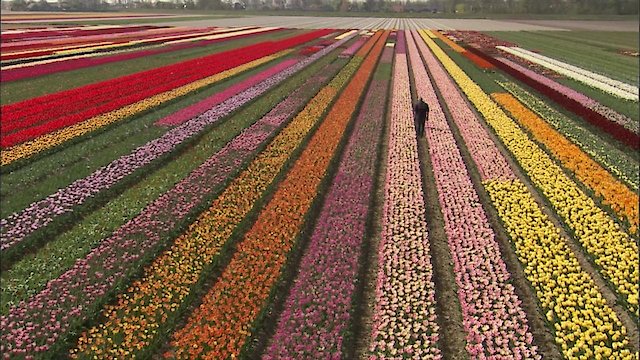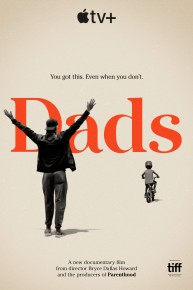
The Botany of Desire
Where to Watch The Botany of Desire

The Botany of Desire is a visually rich and intellectually stimulating documentary film released in 2009, based on the non-fiction book of the same name by Michael Pollan. It delves into the intricate relationship between humans and plants, exploring how select plants have evolved in a way that caters to human desires while simultaneously influencing human culture and society. The film is anchored by the engaging narrative style of Frances McDormand, who serves as the narrator, guiding viewers through this multifaceted exploration.
At the heart of the film are four specific plants: the apple, the tulip, marijuana, and the potato. Each plant is framed as a case study to illustrate a distinct human desire: sweetness, beauty, intoxication, and control, respectively. Through these lenses, The Botany of Desire unpacks the complex interplay of nature and nurture, innovation and tradition, and the paradoxical relationship between human beings and the flora that we cultivate.
The film opens with a look at the apple, a fruit that has long been associated with sweetness in a variety of cultural contexts. Pollan shares insight into the history of apples and their cultivation, revealing how apples have been selected and bred to appeal to human tastes and preferences. The narrative emphasizes the allure of sweetness and how it has driven the domestication of this fruit, leading to a diversity of varieties that fit human desires for flavor, nutrition, and even symbolism. Through captivating cinematography, viewers are treated to lush orchards and the delicate process of apple cultivation, which is presented as a beautiful yet intricate dance between nature and human intervention.
Transitioning to the tulip, the film explores beauty and the lengths to which humans will go to attain it. The tulip's rise to fame during the Dutch Golden Age serves as a historical backdrop to discuss how humans have a tendency to elevate certain plants to symbolic status, often leading to cultural phenomena such as tulip mania. This section of the film dives deep into the relationship between economic value and aesthetic desire, illustrating the tumultuous and obsessive pursuit of beauty that defines the tulip's story. The film uses vibrant visuals of tulip fields to accentuate the flower’s aesthetic appeal, while also investigating the cultural implications of beauty and its ephemeral nature.
The exploration of marijuana introduces a contemporary perspective on desire, revealing society's shifting view on this once-stigmatized plant. Pollan examines marijuana's history, its association with pleasure and rebellion, and the evolving legal landscape surrounding its use. This segment of the film presents marijuana not only as a source of intoxication but as a catalyst for broader discussions about personal freedom, societal norms, and the drug war. Interviews and insights from various stakeholders—including growers, users, and advocates—provide a comprehensive look at how this plant has been interwoven into the fabric of social and political discourse.
Finally, the investigation turns to the potato, a staple crop that embodies the desire for control and reliability. The film delves into the history of the potato, from its origins in the Andean mountains to its crucial role in shaping human diets worldwide, particularly during events like the Irish Potato Famine. Pollan highlights the potato’s adaptability and resilience, which appeals to humanity's desire for sustenance and security. This segment also emphasizes the impact of genetic modification and agricultural practices on the future of food. By examining the delicate balance between control and nature, The Botany of Desire poses questions about food security, environmental sustainability, and the ethical considerations of modern agriculture.
Throughout the film, the cinematography is noteworthy, with stunning visuals that highlight the beauty and intricacies of each plant being examined. The lush colors and detailed shots of the flora serve as a visual accompaniment to Pollan’s compelling narrative, drawing viewers into the world of botany and its profound connection to human experience.
The Botany of Desire serves not only as an exploration of specific plants but also as a broader commentary on human desires and the pervasive influence of nature in our lives. It encourages reflection on how our desires shape the world around us and how, in turn, the natural world influences our desires. The blend of science, history, and personal anecdotes creates a rich tapestry that engages viewers intellectually and emotionally, inviting them to consider their own relationship with the environment.
In conclusion, The Botany of Desire is an insightful and visually captivating documentary that masterfully intertwines botanical science with human desire. Frances McDormand’s narration adds depth and warmth to the narrative, making the complex themes accessible to audiences. It is a thought-provoking film that leaves viewers with a renewed appreciation for the plants that shape our lives and the subtle yet profound connections we share with the natural world. Through its exploration of these botanical narratives, the film prompts us to ponder the deeper implications of our desires and the ways in which they manifest in our relationships with nature.
The Botany of Desire is a Documentary movie released in 2009. It has a runtime of 120 min. Critics and viewers have rated it mostly positive reviews, with an IMDb score of 7.6..
How to Watch The Botany of Desire
Where can I stream The Botany of Desire movie online? The Botany of Desire is available to watch and stream, buy on demand, download at Amazon Prime, Amazon. Some platforms allow you to rent The Botany of Desire for a limited time or purchase the movie for downloading.
































